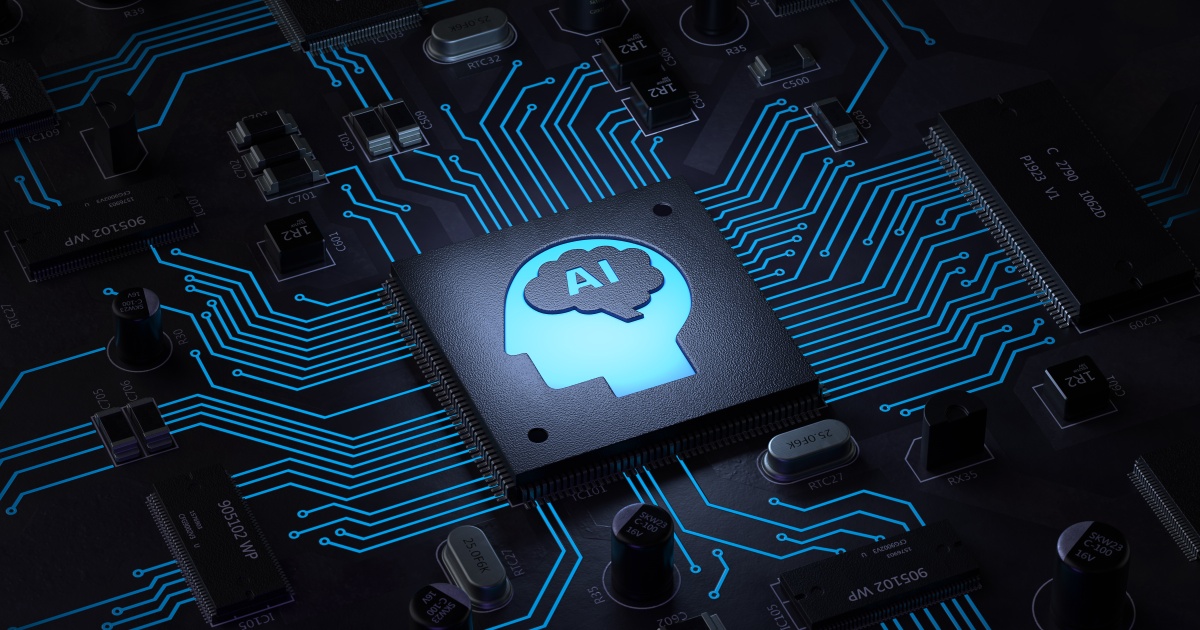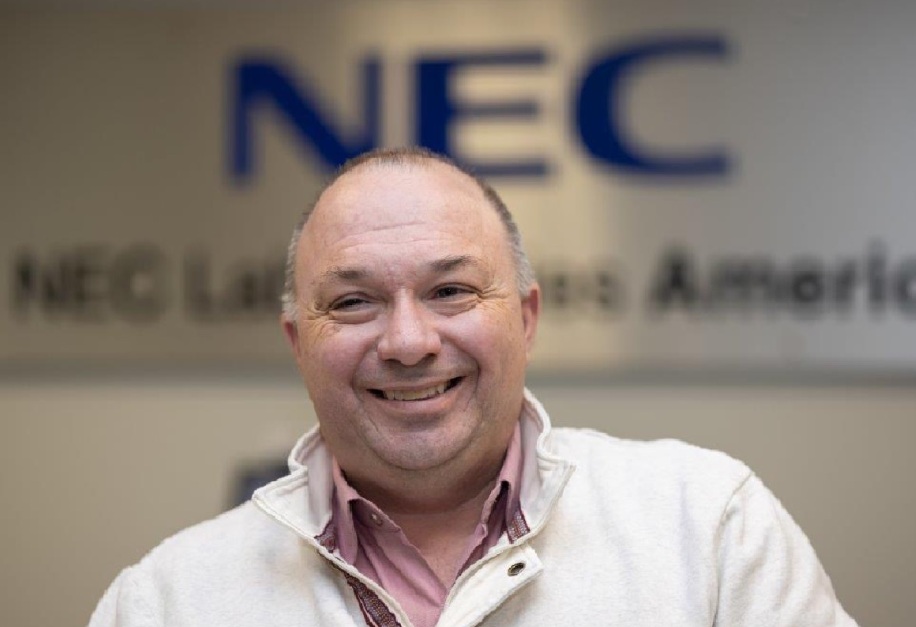
Artificial intelligence (AI) is one of the most widely discussed topics across the technology landscape. Today, we’re at the cusp of a new revolution I call ‘Invisible AI’ that is fueling the creation of smart cities, smart factories, and smart homes. This revolution resides in advanced methods of sensing ourselves and our environment, in algorithms that convert data into contextual understanding, and in systems that enable near-instantaneous interaction and communication. As Invisible AI technology evolves, it will intelligently anticipate our needs, automate critical tasks, and optimize the human experience.
Standing at the Precipice
The transition to fully responsive, safe and secure AI-powered environments and processes will be propelled by the critical work done in industrial labs like ours.
In almost every aspect of life today, we’re conditioned to believe that AI will improve how we interact with systems and technology. The touch of a finger can now open doors and unlock devices. Self-driving trucks loaded with freight are making deliveries. Our shopping is improved with more targeted, relevant offers. AI powers all of these advances. But are today’s approaches to AI reliable? Can they consistently and accurately deliver an emerging AI-powered infrastructure we can depend upon for manufacturing, transportation, and retail?
Managing Evolving Expectations
The concept of AI has permeated our society and popular culture for decades. As a child, Saturday mornings were spent with cartoons like “The Jetsons,” which was set in a futuristic world of AI-powered personal aircraft and talking robots.
Fast-forward a couple of decades to 1984’s blockbuster “The Terminator,” a movie centered on the AI system Skynet waking up and becoming self-aware on August 29, 1997. Obviously, this is not the role we want AI to have, but it sets an expectation for AI capability that is now almost 40 years old.
And I don’t know about you, but I was glued to the television in 2011 when IBM’s Watson computer beat some of the best contestants ever to play “Jeopardy!”. The New York Times spoke with the lead scientist who created that system, reporting: “Dr. Ferrucci understood Watson’s limitations. The system could mine oceans of text, identify word patterns and predict likely answers at lightning speed. Yet the technology had no semblance of understanding, no human-style common sense, no path of reasoning to explain why it reached a decision. Eleven years later, despite enormous advances, the most powerful AI systems still have those limitations.”
Today, it’s nearly impossible to read technology or business news without reading about the momentum behind AI-powered technologies like ChatGPT.
The Reality of AI Expectations Today
From very early ages, we are training children that the world will react to them rather than them needing to react to the world. They press a button or swipe a screen and an experience is delivered instantly. This is a massive experience change compared to previous generations.
It’s no longer enough to deliver the same user-friendly, frictionless experience. The expectation now is that the world will change based upon your request rather than you needing to fit a specific request to match the environment around you.
And unlike all the buzz around ChatGPT (which users can see in action), AI to power systems that will meet our expectations for the world will change around us and will be invisible.
Invisible AI
We can all agree that despite having come a long way, we are still in the early days of understanding the full potential of AI and environmental optimization.
The future of AI is the idea that there are automated intelligence systems that optimize our environment to us. These systems predict our needs. They constantly adjust to match our requirements and simplify our existence as a whole.
I refer to this as Invisible AI because, in most cases, we will only notice them if they stop working.
A simple analogy is the current cellular communication networks we use daily. People don't recognize where the cell towers are. They don't think about the complexity necessary to deliver a call to a phone in your pocket or to deliver a streaming video to the same device. We take this complexity for granted until it doesn’t work, at which point we start to get agitated at our phones and network providers.
With Invisible AI, doors will open, traffic patterns will change, network resources will adjust to manage peak workloads, and goods, services and experiences will be delivered at the exact moment of need.
We’ll reach a point when no one notices when Invisible AI does something. It’s not going to surprise anyone that the world is optimizing around us. However, it will upset all of us when we expect these specific experiences, but they stop working. The world will feel broken.
The result of Invisible AI is moving from being surprised that something is automated to being upset when it's not.
Celebrating Incremental Growth
Specifically, the innovations we’re creating at NEC Labs America and the technical challenges that define our research vision are paving the way toward an AI-enhanced future.
Take, for example, the work we’re doing with System Invariant Analysis Technology (SIAT), which automatically extracts and creates invariant or unchanging relationships that represent the characteristics of facilities or systems based on massive quantities of sensor data. By comparing the values predicted by the invariant model with real-time data, "not usual” behaviors can be detected. Our research in this area led to the development of NEC Corporation's AI-powered monitoring system, now in use at Lockheed Martin, where it performs intricate checks to ensure spacecraft are tested and operating properly during the production phase.
The speed at which SIAT can detect anomalies—changes in vibrations, pressure, or temperature--is beyond human capabilities. What an engineer might discover in 240 years of analysis, SIAT can detect in an hour. Talk about progress!
Smart People + Hard Problems = Magic
Delivering Invisible AI that can optimize our environments by understanding and predicting is challenging work.
Given the operating limitations and the pressure on technology companies to deliver short-term results, we expect many of these problems to persist for years—if not decades—to come. This is where the long-term vision and work at NEC Labs America is critical.
This mission is based on taking real-world problems that inspire the development of real-world solutions connected to fundamental advances. Achieving this requires smart people with many different perspectives to dissect and understand the hard problems that come from the business. As a result, we create something you wouldn't have been able to do if you were trying to solve a siloed business problem or just trying to advance the state-of-the-art academically. And that’s part of the magic. Solving the right problems, not with a single specific solution but with solutions that can be replicated across multiple contexts.
Although I will be waiting a while longer for my flying car, I can confidently say that AI-driven productivity, safety, and security improvements to our infrastructure and critical processes are constantly evolving. The changing expectation is the movement from people being surprised that something is automated and adjusts to them to being upset when a system doesn't.
This transition to a frictionless world will happen, and it will happen without us noticing it. It will happen because of Invisible AI.
 Christopher A. White, President of NEC Laboratories America
Christopher A. White, President of NEC Laboratories America
Christopher A. White is the president of NEC Laboratories America, where he leads a team of world-class researchers focusing on diverse topics, from sensing to networking to machine learning-based understanding.
Before NEC, he spent 22 years at Bell Labs, leading the Algorithms, Analytics, Augmented Intelligence, and Devices (AAAID) research lab.
He holds a BS in Chemistry from Carnegie Mellon University and a Ph.D. in theoretical quantum chemistry from the University of California in Berkeley. His research interests include creating computational models and methods for simulation, modeling, and controlling interesting physical and digital systems.
Edited by
Alex Passett